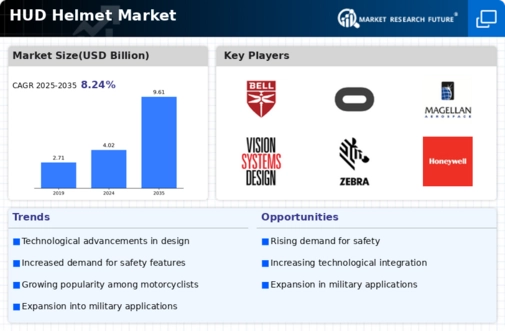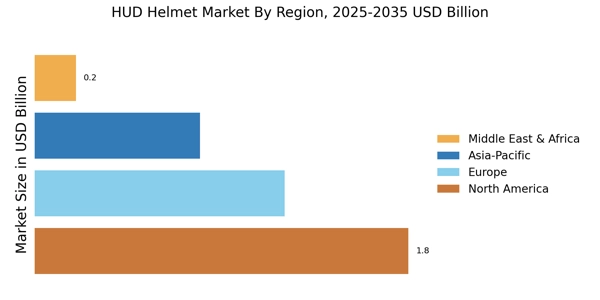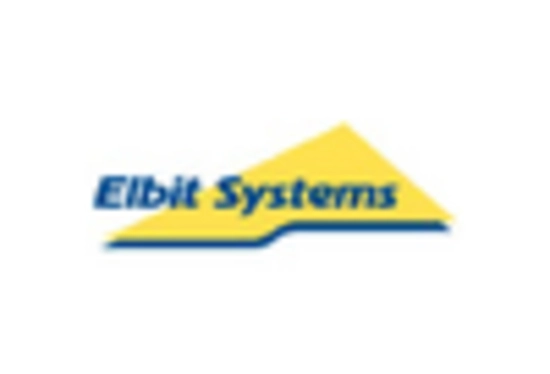Technological Advancements
The HUD Helmet Market is experiencing a surge in demand due to rapid technological advancements. Innovations in augmented reality (AR) and heads-up display (HUD) technologies are enhancing the functionality of helmets, making them more appealing to consumers. For instance, the integration of real-time data analytics and navigation systems into helmets is becoming increasingly common. This trend is supported by a projected growth rate of approximately 15% in the AR market, which directly influences the HUD Helmet Market. As manufacturers invest in research and development, the introduction of smart helmets equipped with sensors and connectivity features is likely to reshape consumer expectations and drive market growth.
Increased Focus on Worker Safety
The HUD Helmet Market is significantly influenced by an increased focus on worker safety across various industries. Organizations are prioritizing the implementation of advanced safety equipment to reduce workplace accidents and enhance employee protection. This trend is reflected in the growing adoption of HUD helmets, which provide real-time information and alerts to users. According to recent statistics, workplace injuries have decreased by 20% in sectors that have adopted advanced safety technologies. As companies strive to comply with stringent safety regulations, the demand for HUD helmets is expected to rise, further propelling market growth.
Rising Demand in Various Sectors
The HUD Helmet Market is witnessing rising demand across various sectors, including construction, military, and sports. In the construction sector, the need for enhanced safety measures is prompting companies to adopt advanced helmet technologies. Reports indicate that the construction industry is expected to grow at a rate of 5% annually, which could lead to increased investments in safety equipment, including HUD helmets. Similarly, the military sector is increasingly incorporating HUD technology into helmets for improved situational awareness. This cross-sector demand is likely to bolster the overall market, as diverse industries recognize the benefits of integrating HUD technology into their safety protocols.
Consumer Awareness and Preferences
The HUD Helmet Market is also shaped by changing consumer awareness and preferences regarding safety equipment. As individuals become more informed about the benefits of advanced helmet technologies, there is a noticeable shift towards purchasing HUD helmets. Surveys indicate that approximately 70% of consumers prioritize safety features when selecting helmets, which is driving manufacturers to innovate and enhance their product offerings. This growing consumer preference for technologically advanced safety gear is likely to stimulate market growth, as companies respond to the demand for helmets that not only protect but also provide additional functionalities.
Regulatory Frameworks and Standards
The HUD Helmet Market is positively impacted by evolving regulatory frameworks and standards aimed at enhancing safety in various sectors. Governments and regulatory bodies are increasingly mandating the use of advanced safety equipment, including HUD helmets, to ensure worker protection. For instance, new regulations in the construction and manufacturing sectors are pushing companies to adopt helmets that meet specific safety standards. This regulatory support is expected to drive market growth, as compliance with safety regulations becomes a priority for organizations. As a result, the HUD Helmet Market is likely to expand as more companies invest in compliant safety technologies.


















Leave a Comment